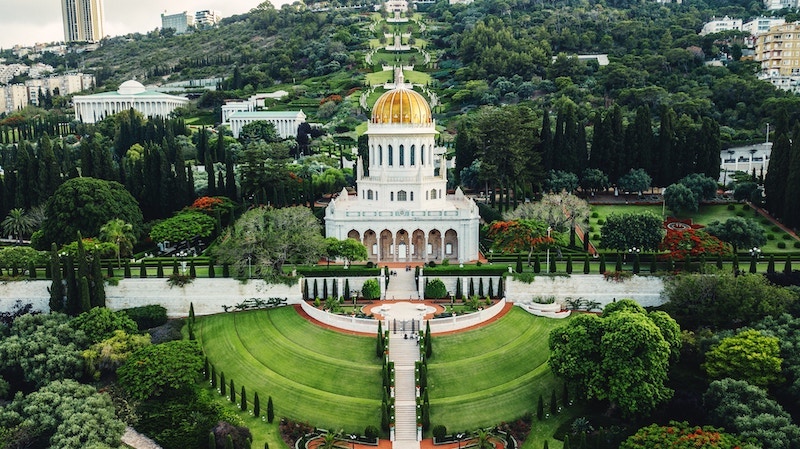The Middle East is a treasure trove of history and culture, and it’s a magnet for travelers who seek the road less traveled.
Think pyramids rising from the golden sands, ancient cities whispering the tales of empires long gone, and intricate alleyways echoing with the footsteps of past civilizations. However, beyond the iconic landmarks, there’s a wealth of overlooked historical gems waiting to be explored.
From ancient ruins to modern gardens, here are five underrated Middle Eastern destinations for travelers seeking to go off the beaten path:
1. Zeugma, Turkey: Euphrates Selevkaya
Zeugma, an ancient city founded in 300 BC and located in present-day Turkey, is a treasure trove of historical and archaeological wonders.
This ancient Greco-Roman city of Zeugma in southern Turkey was a prominent trade hub under Roman rule due to its strategic location along the Euphrates River. Excavations have uncovered stunning mosaic floors and ancient ruins depicting mythological scenes and everyday life.
Zeugma’s significance lies in its unique blend of Greek and Persian influences, reflected in its art and architecture. The Zeugma Mosaic Museum in Gaziantep showcases these mosaics and vividly brings Zeugma’s history to life.
Wander the site to see excavated villas, baths, temples, and stunning tile work. Zeugma provides a window into the multicultural influences and sophisticated artistry of the ancient world along the Silk Road trade routes.
2. Bahai Gardens, Israel
The Bahai Gardens, located on the slopes of Mount Carmel in Haifa, Israel, are a stunning, terraced garden complex that showcases the beauty of the Bahai faith.
The temple, according to Isrotel, is a sacred place of the Bahai faith and also a UNESCO World Heritage Site. It features a series of terraces, flowers, fountains, and sculptures, culminating in the impressive Shrine of the Bab at the top of the hill. The construction of the gardens began in 1987 as a tribute to the Bahai faith and its founder, Baha’u’llah.
These gardens reflect the principles of the faith, which include unity, harmony, and beauty. Here, you’ll find plants from all corners of the globe flourishing side-by-side, representing the oneness of humanity. The Bahai gardens in Hafai are open to everyone, offering a peaceful haven for visitors of all faiths and backgrounds.
These gardens not only hold profound spiritual significance but also stand as a testament to architectural brilliance and meticulous design. The gardens’ unique design and impressive Shrine of the Bab make it a must-visit destination for travelers seeking a peaceful and spiritual experience.

3. Persepolis, Iran: The Ancient Capital of Persia
The ancient Persian capital of Persepolis stands as one of the most striking archaeological sites in the Middle East.
Founded by Darius I in 518 BC, Persepolis served as the ceremonial center of the once-mighty Achaemenid Empire (550–330 BC). Though destroyed by Alexander the Great, Persepolis remains a powerful symbol of Iran’s rich history and cultural heritage. This UNESCO World Heritage Site is carved into the foothills and boasts majestic stone palaces, ceremonial stairways, and intricate reliefs that narrate stories of power and artistry.
Persepolis is more than just a collection of ruins; it’s a testament to ancient architectural and artistic brilliance. The Apadana (Audience Hall), where colossal columns stand guard over friezes, showcases the empire’s vast reach and diverse peoples. Whereas, the Gate of Nations, with its intricate carvings, depicts the delegations from other conquered territories.
Tip: Combine your visit to Persepolis with exploring nearby Naqsh-e Rostam, a royal necropolis with majestic cliff tombs carved into the mountainside.
4. Ani, Turkey: The City of 1,001 Churches
Sitting along Turkey’s border with Armenia lies the ghost city of Ani.
This medieval site was once a thriving capital and an important crossroads along the Silk Road trade routes. The ruins contain thousands of historic structures, earning Ani the moniker “City of 1,001 Churches.” This destination offers a glimpse into the rich history and architectural heritage of the Armenian people, who were among the first to adopt Christianity as their state religion in the early A.D. 300s.
Highlights of Ani include:
- Church of St. Gregory of the Abughamrents: It was constructed as a private chapel for the powerful Pahlavuni family and showcased the architectural prowess of the time.
- Ani Cathedral: A stunning example of Armenian architecture, this cathedral was built by the renowned Armenian architect Trdat. Also known as Surp Asdvadzadzin (the Church of the Holy Mother of God).
- Chapels and Cave Chapels: So far, 50 churches, 33 cave chapels, and 20 chapels have been discovered.
5. Ashgabat, Turkmenistan: The City of the Dead
The Turkmenistan capital of Ashgabat displays unusual Soviet modernist architecture.
After a devastating earthquake in 1948, Ashgabat was rebuilt in a grand Soviet style, transforming the desert city into a unique oasis. Ashgabat’s grandiose white marble buildings adorned with gold, fountains, and monuments reflect the country’s ambition and wealth.
The city’s architecture is a blend of Soviet and Turkmen styles, with notable landmarks including the Arch (or rocket) of Neutrality, the colossal Independence Monument, and the extravagant Alem Cultural and Entertainment Center.
While firmly totalitarian in scale, the monolithic buildings offer a retro-futuristic glimpse into this Central Asian capital. For a complete historical immersion, venture beyond the city to uncover the ruins of Nisa and Merv, once key stops on the Silk Road.
In conclusion, the Middle East is a region rich in history and cultural diversity. It has countless historical gems that adventurous travelers can enjoy.
From the ancient city of Zeugma in Turkey to the Bahai Gardens in Israel and the majestic ruins of Persepolis in Iran, each destination tells a unique story. Whether it’s exploring the “City of 1,001 Churches” in Ani, Turkey, or experiencing the Soviet-era architecture of Ashgabat, Turkmenistan, these off-beat sites offer a rich tapestry of historical, architectural, and spiritual significance.
So, ditch the crowds and embark on your historical adventure. Let the echoes of fallen empires, diverse faiths, and vanished cultures inspire your journey into the fascinating past of the Middle East.

